Hood: puzzled by CFM/cost, perimeter suction & cleaning glass?
Futuro Futuro hoods supposedly pull 940 CFM and they are cheaper than other hoods such as Miele that report pulling 600 to 700 CFM. What gives? Are the CFM claims accurate? Could it be because their recommended installation height is lower (26" to 30") than the recommended heights of other hoods. Is that why they can claim higher CFM?
Should "perimeter suction" work better than the traditional system? It makes intuitive sense, but has anyone tested it?
Last but not least, do glass canopies get dirty every time you use the hood? How annoying is that?
Comments (31)
emily_mb
Original Author13 years agoWow amcook! Thank you. Your response and another thread I read on CFM need are very informative. I wonder if information on the conditions that companies use for measuring CFMs easily available.
Granted that it can be marketing (with an added price tag of $900). But, my take on the perimeter suction is that the hood does NOT have suction in the center so that (supposedly) it causes a curtain wall. What I imagine is that if you have a strong "line" of upward draft this creates a downdraft on the outside. Reasonable?
Right now, my take on it is that 940 CFM may be overkill for 4 induction burners on which I will mostly use 2. But, the overkill will hopefully compensate for stirfrying for 2, the flat surface that minimizes blocking the view, the 6" duct, and the 90 degree angle to carry it across the ceiling to the building vent column. How does that sound?
But, I'm still wondering if the perimeter suction (with the florescent light bulbs that don't generate heat) might not be worth the extra $900.
Related Professionals
Manchester Kitchen & Bathroom Designers · Saratoga Springs Kitchen & Bathroom Designers · Wesley Chapel Kitchen & Bathroom Designers · Eagle Mountain Kitchen & Bathroom Remodelers · Wood River Kitchen & Bathroom Remodelers · Cloverly Kitchen & Bathroom Remodelers · Galena Park Kitchen & Bathroom Remodelers · Glen Carbon Kitchen & Bathroom Remodelers · New Port Richey East Kitchen & Bathroom Remodelers · Niles Kitchen & Bathroom Remodelers · Warren Kitchen & Bathroom Remodelers · Langley Park Cabinets & Cabinetry · Land O Lakes Cabinets & Cabinetry · Vermillion Cabinets & Cabinetry · Short Hills Cabinets & Cabinetryamcook
13 years agoHi Emily,
I realized my post may have sounded disparaging to your choice of hoods but that was certainly not my intent. The flat panel hoods certainly does have an aesthetic appeal that is an important part of the design of the kitchen. I shouldn't have used the term "design flaw". Instead what I should have said is that the perimeter suction design is to compensate for the fact that there is no mechanical containment for the vapors. I didn't mean to imply that it was useless but rather that it is only necessary because of the flat panel design and that is style driven and not performance driven. So the question you have to ask is if the $900 is worth it to you to get similar performance with better style. I'm lucking in that both my wife and I like look of the traditional hoods so we can opt for the best price/performance combination.For the duct and noise, I'd try to avoid 90 deg bends for lowest noise. Two 45 deg with a staggered section might be better for noise. It all depends on the available space since that may make anything but a 90 impossible. Talk to your HVAC person and mention your concern about noise.
Good luck.
emily_mb
Original Author13 years agoamcook, You were not disparaging AT ALL. I am quite critical and aware that manufacturer's claims can be misleading. What I am trying to do is NOT block the view AND get good function. The problem I have is that I cannot determine which hoods will give me "similar performance." All I have to go by is the company's specs and advice from people with expertise. Any other suggestions for determining performance? For instance, are there tests that products have to undergo and I could ask the company for test results?
Is there any logical reason to suppose that, with all other things being equal, the design that they have come up with "perimeter suction" might be better than the standard? It makes some sense to me if you suppose that fumes will travel outward as they rise (I've read at about 22 degrees). So, a hood that puts all its power on the edges might be better than others at capturing escaping fumes. Is there logic there or am I looking for the Easter Bunny? Believe me, I would be very pleased to save $900!
As to the bend, the tube goes up to the ceiling, which is concrete, and then it has to go about 6 or 7 feet inside a dropped ceiling to the corner of the room that has the building's vent pipe. I cannot imagine how it might be done without a 90 degree angle. I want to drop the ceiling as little as possible- maybe 6 inches. So I plan to widen and flatten the tube that travels inside the dropped ceiling. I know that the volume has to remain the same. Any tips on that regard?
Thank you for your help. By the way, I just saw on the web a German hood, only available in Germany and in England, that left me absolutely speechless!
amcook
13 years agoOk, I'm glad it wasn't read that way. It sounds like you've done quite a bit of research yourself about the spread of fumes and how venting works. You are absolutely correct that fumes spread as they rise and yes, 22-30 degrees from vertical is about right. Realize however the the fumes are fill a volume and is not just in the perimeter. That means that with a perimeter vent, the central column of vapors will hit the bottom surface of the vent (where there is no suction) and flow around to the edges to be drawn up. This is fine but when the vapor contacts any cooler surface, it will condense liquids and solids (including water and oil) to that surface. Also, the redirection of air from the perimeter to a confined duct is abrupt. These abrupt transitions can interrupt flow and increase air flow resistance thus decreasing the actual CFM of air movement. This is not counting any filter or baffles that might come into play.
With a standard hood, the central column is caught directly and there is a perimeter suction affect which although not as pronounced does pull vapors in from the edge. Also, with a standard hood design there is an air flow pattern that actually pulls the vapors to the middle thus reducing the angle of spread. You still have the baffles/filters which adds resistance in this case. So, given the same motor CFM rating (unimpeded) and the same duct size, I would say it is very hard for a panel vent with or without perimeter design to be better than standard. With the perimeter suction I think you do improve things. To use an analogy, it's easier to get a flock of sheep from point A to point B by spacing people along the path and keeping the sheep in line than having the same number of people only at point B trying to gather the flock. :)
I'm no HVAC expert and I have basically no experience with panel vents but I'm decent at fluid dynamics and do have a bit of practical experience with various types of commercial restaurant and standard residential hoods.
Hope some of this helps.
emily_mb
Original Author13 years agoThank you. I will get more information from the company about the design and about the reason(s) for it. And then I'll probably have to end up either tossing a coin, going with the cheaper, or going with the one I like best (in terms of looks)-- all well-established criteria :)
John Liu
13 years agoIf you look at vent hoods for industrial and commercial applications, which are designed strictly for ''function'', none of them look like the Futuro hoods. They all have deep funnel-like designs and pull air into a large center duct. I think that's a strong hint that the Futuro hoods are designed for ''form''.
I'd suspect the ''perimeter suction'' draws in a more-than-ideal amount of air from outside the area covered by the hood, air that doesn't need to be exhausted.
kaseki
13 years agoThe problem with commenting on particular hoods is that buyers have differences in emphasis among the three main hood traits: economy, function, and aesthetics. These traits are generally not achieved in the same hood. Most residential hoods are compromises among these traits. Without knowing the buyer's tolerance for grease, odor, hood intrusiveness, and financial flux to someone else, arguing for or against a particular design compromise can easily be misguided.
It is evident from their web site that futuro futuro emphasizes aesthetics at possibly affordable cost, and not function. One only need view a Schleiren photo of cooking effluent escaping even a commercial hood to see that capture volume, hood overhang, and air flow rate are all critical to function. A flat surface above a cooking zone will have great difficulty in capturing and containing effluent without a very high flow rate. One reason is that the flow at the aperture (filter, baffles, etc.) rapidly drops off as one moves down or to the side of the aperture. Hence, the high flow rate has to exist over the entire expanded effluent zone above the cook top at the height of the hood. Lower flow rates can be successful with more conventional hoods if the effluent is directed upward into a narrowing space and removed before reflecting off the sides and escaping.
There is no substitute for evaluating the size of the expanded effluent zone and determining what hood and cabinet configuration is needed to capture most of it. Once the hood size is determined, then flow rates followed by duct diameter can be determined.
kas
emily_mb
Original Author13 years agoKas, you lost me a bit at the end "Once the hood size is determined, then flow rates followed by duct diameter can be determined." (induction wok 18,000 BTU max, 2 burner induction; 36" hood, 940 CFM, 6" duct)
I understand that a flat panel will be less effective than a canopy, but how much less?! Will a flat panel 940 CFM work as well as a 600 CFM with a canopy? Worse than a 600 CFM?
amcook
13 years ago"I understand that a flat panel will be less effective than a canopy, but how much less?! Will a flat panel 940 CFM work as well as a 600 CFM with a canopy? Worse than a 600 CFM?"
That's almost impossible to say because it depends on the type of cooking you do and how you do it. There's no magic formula since they are so fundamentally different designs. 940cfm is over 150% of 600cfm so it has a pretty good chance of making up the lack of a capture canopy. Just remember it will be likely louder and less energy efficient to run.
Good luck.
milele
13 years agoOk, it seems that there are few very knowledgeble people here. I bought a Savona Zephyr about 6 years ago and now I am trying to figure out if I can use the canopy (which I really like) and replace the rest. I can also leave the filters. Any suggestions on where to look? I cannot find any local shop who can help...please help...I am dead without hood and I do not want to buy another "nice looking hood" that is not meant for serious cook..TX in advance
emily_mb
Original Author13 years agoMilele,
I am definitely NOT knowledgeable, but from what I have read, it seems that there are companies that do costume hoods. You should be able to get one of them to costume one for you using your existing canopy. Note, however, that if you want something really powerful, a 6" duct may not be sufficient. You may have to go with an 8" duct and your fixture may not have the width to support an 8" duct.
davidro1
13 years agoHave Canopy and Duct. Need Blower and Filter.
How's that for a title to your thread?
milele your question is so specific and so different, that it needs a thread all to itself.
Fill in the details. Your post above is skimpy.--
I wrote in http://ths.gardenweb.com/forums/load/appl/msg0814474816778.html
about how I got started building my own vent.HTH
Here is a link that might be useful: building one from parts
kaseki
13 years agoSorry for the late reply, Emily, I seem to have missed seeing your question.
"Kas, you lost me a bit at the end "Once the hood size is determined, then flow rates followed by duct diameter can be determined." (induction wok 18,000 BTU max, 2 burner induction; 36" hood, 940 CFM, 6" duct)"
What I meant to imply was that having chosen a hood that has as much capture aperture as you can stand or afford, and given a desirable flow velocity of, say, 3 ft/s at that aperture, then multiplying the aperture area (in square feet) by the velocity yields the cubic feet per second required. Multiply by 60 to get cubic feet per minute (cfm). Note that the aperture I'm referring to is where the filters or baffles are, and not necessarily at the bottom of the hood.
Depending on how convoluted your ducting is, and how good your make-up air system is (or open windows are), you may require a fan "rated" up to 1.5x this cfm value to make up for losses in the ducting and house negative pressure.
Given the calculated cfm (without the 1.5x multiplier) as the actual flow, then the cfm are divided by two numbers: 1000 ft/min and 2000 ft/min. The resulting two areas (square feet) define the limits of the duct cross sectional area that you should strive for. Converting to square inches and solving A = Pi * diameter / 4 for the diameter yields the diameter of the ducting (in inches).
If you have a specific fan in mind, independent of how ideal it is, then its rated cfm should be reduced to account for the afore mentioned losses, and the ducting calculated as above. Usually the hood manufacturer will attempt to do that for you.
However, in your question I see an eyebrow raising combo of numbers, 940 cfm and 6-inch duct. I wouldn't expect this combination to be self-consistent unless the ducting were very short, or the fan design were unusual -- approaching positive displacement in capability (like a Rootes supercharger or IR trailer-mounted air compressor).
What I fear is that serious wok work will overpower your ventilation. Otherwise, I imagine it would be adequate for modest cooking efforts. Be sure to minimize opportunities for cross drafts that will move the effluent plume away from the hood capture zone.
kas
emily_mb
Original Author13 years agoWith a thousand thanks to all who have provided input....
I had to make a decision and juggle function and form. So, I chose the Futuro, Futuro 48" Luxor island model. At this point, it's just a matter of wait and see. As soon as I can, I will post photos and relate my experience.
Right now, we are in the midsts of the remodel. A word of advice for all those who are considering a remodel... DON'T.
kaseki
13 years agoDW related to me that on a recent NPR program called "Wait! Wait! Don't tell me" the news item being discussed was the purported loss of $7 billion in Afghanistan. one panel member asked how anyone could lose 7 billion dollars. Another then piped up with "do a kitchen renovation."
She was obviously experienced with the subject.
kas
willinak
13 years agoJust for the record, having worked at a major manufacturing company in the chem lab, we used fume hoods for most of our exhaust needs. These are large boxes and the air was perimeter baffled on the back wall of the box. Now if we had to have an open (island) hood for some reason, a typical cone shaped hood was constructed with a plate covering the center portion of the inside creating a perimeter air flow. The idea is, you want the maximum air velocity at the perimeter of the hood so fumes, smoke, etc. will be caught before entering the room. FWIW, I believe that the perimeter design, if done correctly, is superior to an open design, and there has been an awful lot of work in the chemical industry on hood design.
That said, what alternative are there out there that use the perimeter baffle system besides the Futuro Luxor series?
Any experiences users, please offer your views!davidro1
13 years agoWith a few more key words, I could start searching, and get educated a little before coming to ask questions.
".... perimeter baffled on the back wall of the box...."
".... perimeter baffle system besides the Futuro Luxor...."(?)
--In retail outlets that can leave their doors open summer and winter, and have great air once you step inside, they have an "exhaust" or vent pulling air either above or below, and they have air to replace it, either from below or from above. This creates a loop recirculating their "good" air.
In millions of supermarkets there is chest height refrigeration shelving, which looks like open shelves. You reach in and take your yogurt. They have air ducts below (which usually you can see), and more air ducts above, in the banner header, and they channel the air so that it runs across the open space.
In both examples, a current is created which is a closed system, almost perfectly separated from the other air. Yes, it does rub against the other air but it doesn't mix very much with it.
This is an air curtain. It seems to me that this idea can work in a kitchen too, which needs an input of new air to make up for the air that gets exhausted. Some fireplaces have an open pipe through the brick wall that allows outside air to come into the firebox; this helps ensure the house doesn't get drained of its "good" air. (Every fire needs some new air all the time). I think a pipe bringing in outside air, unconditioned, is good. I think that in terms of fireplaces this has been studied for a very long time.
With a kitchen exhaust, I'm thinking that this new input of outdoor air can be exhausted right way, so that air doesn't need to be conditioned.
It's now 2011 and I still haven't seen this anywhere.
emily_mb
Original Author13 years agoI bought the Luxor. If you look in the kitchen forum, you can find my note on it and pictures of my kitchen by searching for my name or by searching for Finished white open contemporary....
If I understand perimeter suction the way willinak describes it, with a curtain of air that goes down, then Luxor does not have that, IMH and uneducated opinion. As in, no clean air comes out of it downward to create a curtain. If the plates of glass under the hood have the effect of creating an upward and a downward current === maybe
Note, it can be difficult to intall, but their customer service is very helpful; make sure your installer has more than 2 neurons and is not too proud to take instruction. Also, call customer service with enough time to prep the area as necessary.
I THINK (do not know with certainty) that the CFM information given by all/most of the companies is unreliable because there are no industry standards in testing (Europe has better ones) and because, as others have taught me, effectiveness is affected by many factors.
I do wish the hood were stronger but if I had to do it over (and someone would keep me from jumping off my balcony), I would buy the same hood because it looks perfect in my space and because I love the light it gives. Oh, and I would place it 2 to 3 inches closer to the edge.
Prompt me if I don't,I'll create a little video tomorrow. That's what I wanted when I was choosing.
Oh, and I bought the 48 inch because since I had to have a hood and it was going to be in the middle of everything and no matter what I did, it was going to be a design statement, then I had to consider the proprotions relative to the island-- visual, not functional consideration.
john_com
13 years ago>>With a kitchen exhaust, I'm thinking that this new input of outdoor air can be exhausted right way, so that air doesn't need to be conditioned.
Exactly. I would think the best place to bring in the (unconditioned) MUA would be directly under the range and thus not much mixing with conditioned air before it is exhausted. Something I've thought about for a long while. Now that my "new" wood floors are three+ years old, I'm tempted. The area would have to be of sufficient size so the MUA is not rushing throurgh, more of a gentle flow as to not disturb the exhaust stream
willinak
13 years agoRegarding M U A, I think an inlet directly under the range makes sense. I've seen them in the kick panel of built-in range/ range tops before.
Wonder if you could you use a gravity damper, or would you have to use a motorized damper? Seems like even a simple 4" duct would relieve a lot of the negative pressure on the structure. Any one have DYI input?john_com
13 years ago4" would help but I would shoot for 6 or 8 and I have no calculations so who knows. A lot of air need to be moved.
teachmkt
13 years agoJohn.com/Willinak: In the event you haven't seen it, there is a host of commercial kitchen exhaust test information at the URL below. You can see both flow test results as well as Schleiren photos mentioned above in Kaseki's post above. MUA placement and effects on air curtains are included and the problem of using CFMs between different hood designs and brands as a single surrogate measure of performance is clear. While commercial applications don't have the vast differences in configurations and brands as residential applications, the physics are still the same.
Here is a link that might be useful: commercial kitchen hood tests
kaseki
13 years agoA comment on Willinak's chem lab island setup with the central obstruction: One difference is that when cooking, the effluent rises with significant velocity. When it hits the obstruction, as it will, it will reflect downward. The perimeter air flow would have to capture this downflow by overcoming it. I would want to see a Schleiren photo of such a hood in action to be convinced that the chem lab approach provided an advantage for cooking ventilation.
On untreated MUA rising from the floor around the cooking zone: First persuade the DW that her feet won't get cold.
kas
Venice_chef
13 years agoI'm trying to decide between a Bertazzoni baffle hood insert http://us.bertazzoni.com/freestanding/professional-series/hoods-backsplashes/30-baffle-insert-hood
and a Bertazzoni perimeter hood
I read through this discussion, and others, and I'm still confused about the performance trade-offs. Since these are inserts going into custom canopies, performance is all that matters.
Any thoughts?
kaseki
13 years agoIn lieu of getting to work on the MUA, I followed these two hood links and have the following comments.
The claim that accelerating the air in the perimeter hood makes it quieter cannot be true. High velocity air has more turbulence and hence emits more sound. Having less air flow may be what makes it quieter. This perimeter gap is very small, and the amount of air that can flow through it without sounding like a vacuum crevice nozzle will be low. Also, the front to back dimension seems too small to overlap the rising effluent plumes.
Mesh filters are specified for the perimeter design. While these can be as effective large particle grease filters as baffles, they also catch and retain dust, hair, lint, etc., and require routine washing to keep from gagging the air flow (such as it is in this case).
Both claim the same cfm for the motor power (I can barely resist attacking this terminology), but I would bet that the actual flow at actual pressure losses will make the perimeter unit flow less air than the baffle unit.
I would think that the baffle unit would be better at capture than the perimeter unit due to its aperture size. What the perimeter unit captures will surely be contained, but that should be true of the baffles also. One problem with the baffles is that they appear to be horizontal. Tilted baffles drain grease to places where it can be collected. Maybe they anticipate modest grease removal and hence periodic washing will be sufficient to avoid drips. On the other hand, dripping could function as an automatic warning for cleaning.
If the perimeter insert is deemed very desirable for aesthetic reasons, then perhaps two inserts mounted so that the non-lamp edges meet would provide enough capture depth.
One technical issue is that the perimeter slots have very little influence more than a few gap widths away. Hence rising effluent that hits within the insert perimeter gap has to travel sideways to be captured. This would work if the effluent velocity were small, as in, say, rising cigarette smoke. But the velocity is around 3 ft/s from a hot pan or cooking surface. It will hit the metal and rebound following the law of conservation of momentum. I consider it unlikely that that part of the effluent will be captured.
Earlier in this thread I commented on the conflict that arises between cost, aesthetics, and function, and that also applies here. Sometimes one has to use a less functional hood to meet the limits of the other criteria. I prefer to embrace the opposite perspective, albeit still subject to those limitations, which is to ask: How close to the functionality of a commercial hood can I come without exceeding cost or ugliness budgets.
kas
emily_mb
Original Author13 years agoVenice, I don't know your hood, but you might want to search in YouTube for a video I posted. Search Futuro Luxor wok. Note that I messed up and placed the hood too far back. So, plumes escape between me and the hood. The Luxor has 4 glass plates that attach to the bottom with very strong magnets. Perimeter, or not perimeter. Sometimes I just pop the two center glass plates off and perhaps it works marginally better. By the way, the metal mesh filter is not difficult to deal with. I just stick it in the dish washer. I put the glass plates in there too. Hope this helps
cflaherty
12 years agoEmily, just watched the you tube...is that normal for the fumes/smoke to not be pulled up into the hood b/c its to far back?
B G
2 years ago@emily_mb Hi. I know this is an old post but perhaps you are the best person to ask about the hood. There is very little actual reviews out there from people who have used it ..just a lot of technical opinions. What did you end up doing? Do you like its look and function? What's your advice? Can you post some pics please. Any pointers will be very helpful.

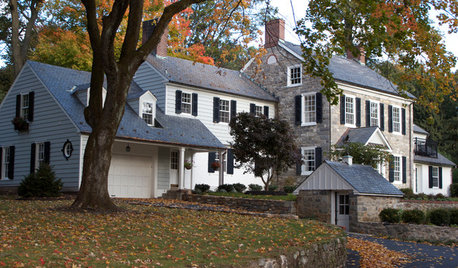

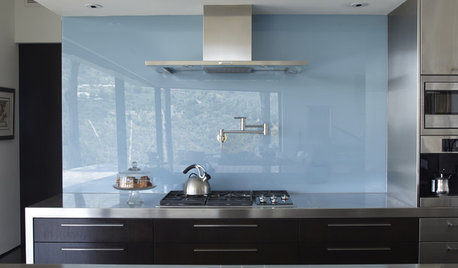

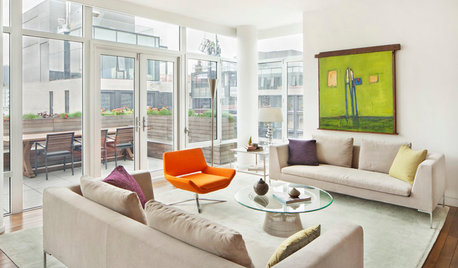
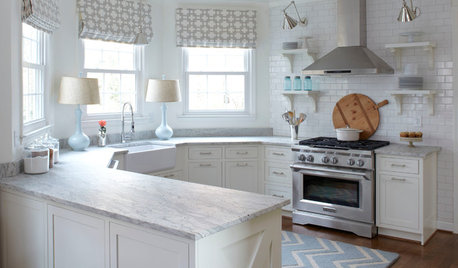

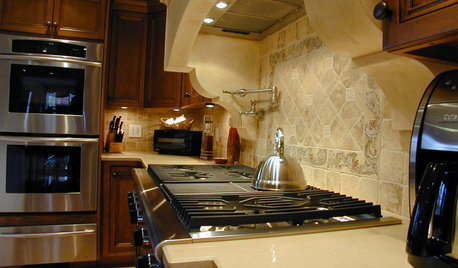








amcook